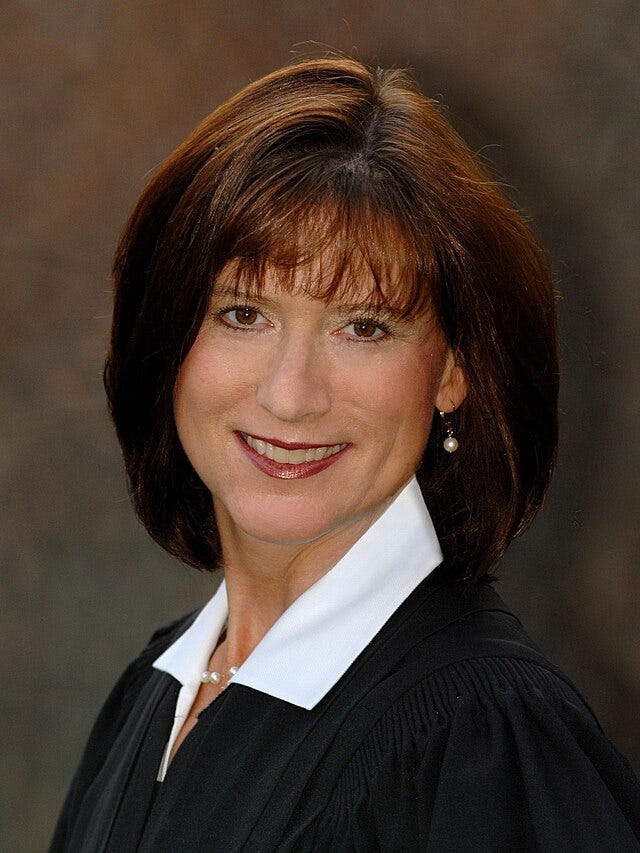Why Diane Sykes Didn't Get Filibustered
Wisconsin's Democratic senators clear her path off state supreme court
President George W. Bush nominated Wisconsin supreme court justice Diane S. Sykes to a seat on the Seventh Circuit on November 14, 2003—the same day on which Senate Democrats defeated cloture motions on Bush’s nominations of three other conservative female state judges to federal appellate seats.
Sykes’s conservative profile might well have guaranteed that she would soon be added to the growing list of filibustered nominees. Longtime Speaker of the House Tip O’Neill surely overstated things when he observed that “All politics is local.” But even as Senate Democrats worked to nationalize their campaign against Bush’s nominees, his adage carried force.
For United States senators, the locality that matters is the state they serve—the state from which they have been elected and from which they hope to win re-election. And for reasons of state politics, Wisconsin’s two Democratic senators, Herb Kohl and Russ Feingold, were eager to see Sykes confirmed.
* * *
Diane Sykes became a trial judge in Milwaukee County at the age of 34. Seven years later, in 1999, Wisconsin governor Tommy Thompson appointed her to the state supreme court. And in 2000, she was elected to a ten-year term on that court.
Sykes established a strong conservative record as a state judge. She was an early member of the Federalist Society and a frequent speaker at its events. So it’s no surprise that she caught the White House’s attention when Seventh Circuit judge John Coffey, based in Milwaukee, decided in 2003 that he would take senior status.
Perhaps more surprising is that the bipartisan panel that Senators Kohl and Feingold set up to recommend judicial candidates included Sykes on its list of four finalists for Coffey’s seat. But, no, the Democratic members of that panel did not go rogue on Kohl and Feingold. Rather, they did exactly as Kohl and Feingold wished.
Kohl and Feingold wanted Bush to nominate Sykes for one simple reason: If she vacated her state supreme court seat, Democratic governor Jim Doyle would be able to appoint her successor. And in so doing, he would transform a supreme court with a conservative-leaning majority into a supreme court with a liberal majority.
* * *
Kohl and Feingold assured the White House that they would support Sykes’s nomination, and the fact that they were both on the Senate Judiciary Committee helped to grease the skids. Kohl and Feingold introduced her at her confirmation hearing in February 2004, and the only questions she received were softballs tossed by Kohl and by Orrin Hatch, the Republican chairman of the committee.
Lest anyone from Wisconsin misunderstand why Kohl was supporting her, Kohl’s first question to Sykes was why she wanted to leave the state supreme court for the Seventh Circuit, and his third and final question asked her to explain why “the Governor of Wisconsin has indicated that he is rather pleased that you are being elevated to this position.” (If you’re curious about the second question, it had two parts: “How would you define ‘judicial activism’? And do you agree that it is to be avoided?)
In June 2004, the Senate confirmed Sykes’s nomination by a vote of 70 to 27. Kohl and Feingold were of course among the 21 Democrats voting yes, as was filibuster schemer-in-chief Chuck Schumer. (Two Republicans and one Democrat were absent.)
* * *
In August 2004, Governor Doyle appointed Louis B. Butler Jr.—the candidate Sykes had defeated in her 2000 election—to Sykes’s seat. With its new four-justice liberal majority, the Wisconsin supreme court quickly became what one commentator called “the nation’s premier trailblazer in overturning its own precedents and abandoning deference to the legislature’s policy choices.” In April 2008, Butler became the first sitting Wisconsin justice in decades to be defeated in a re-election campaign.
In 2009, Barack Obama nominated Butler to a federal district judgeship in Wisconsin, but even though Democrats had 59 or 60 seats for the next year, they were unwilling to pay the political price for pushing for his confirmation, and his nomination languished and died.
* * *
Diane Sykes has had an outstanding career on the Seventh Circuit, as her former law clerk Michael Fragoso’s review of her record illustrates. She has been chief judge of the Seventh Circuit since 2020, and she recently announced her decision to take senior status.



